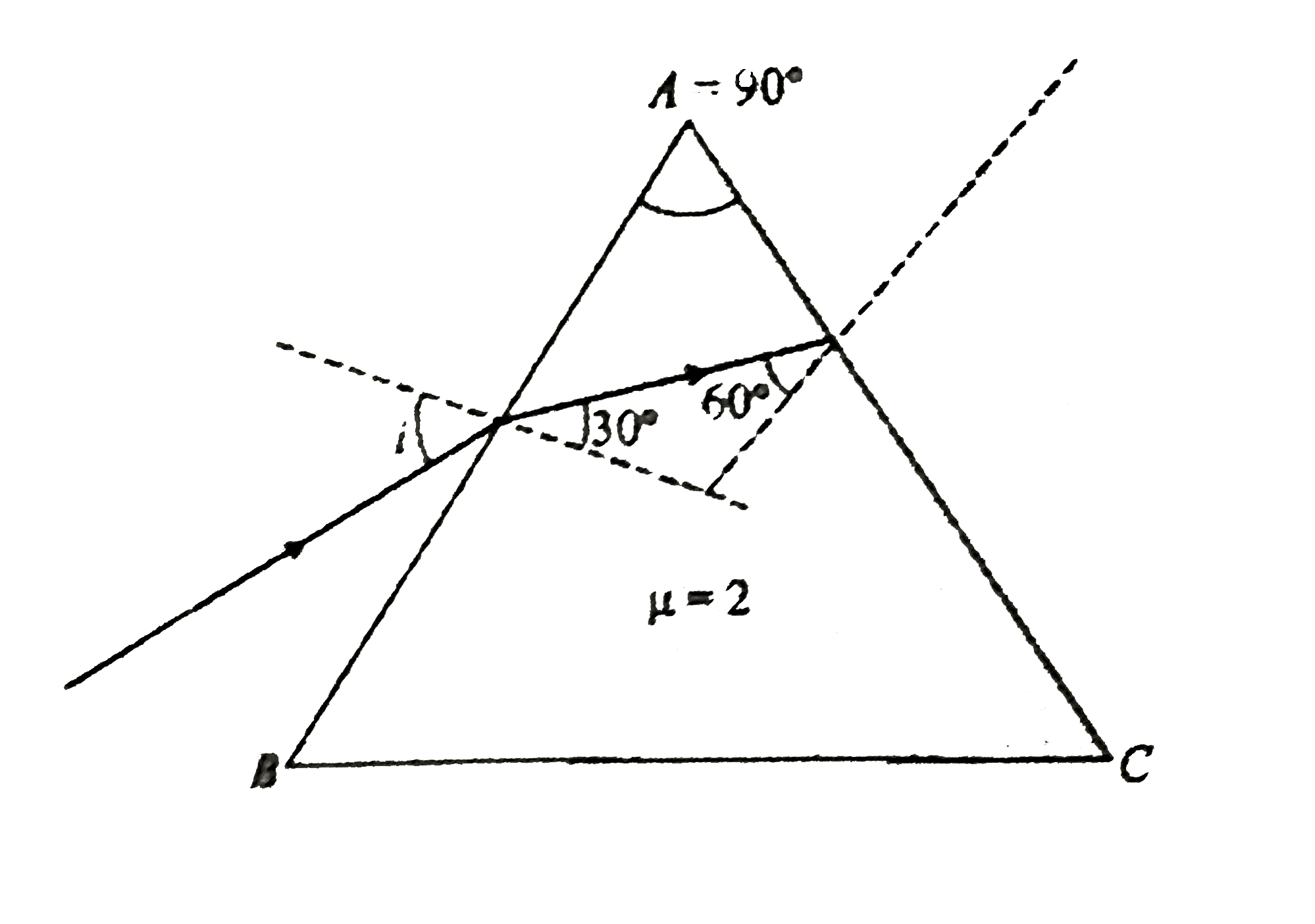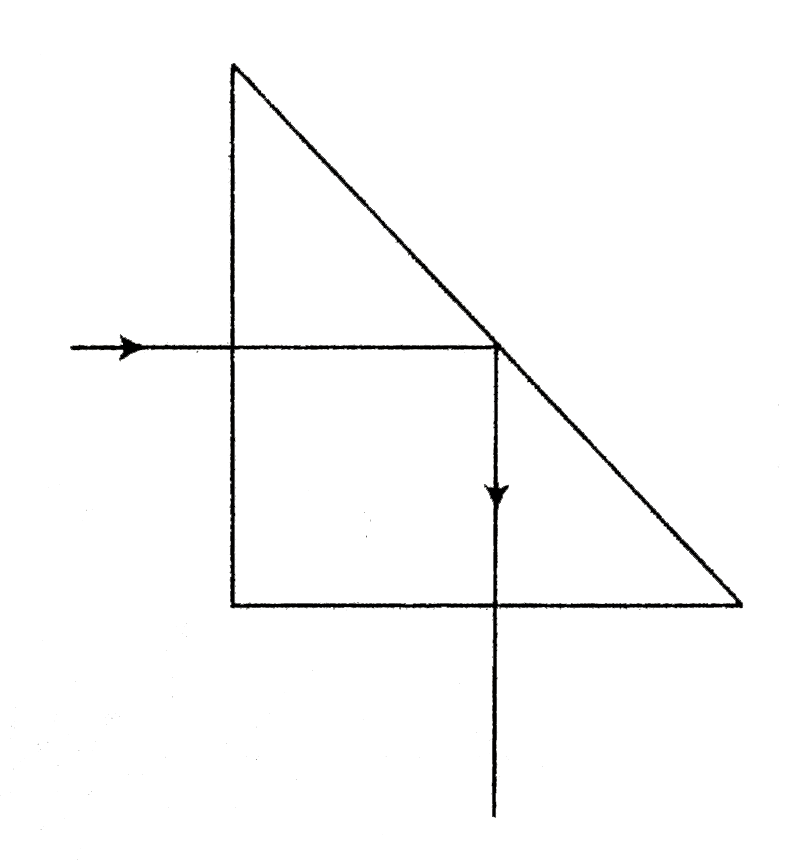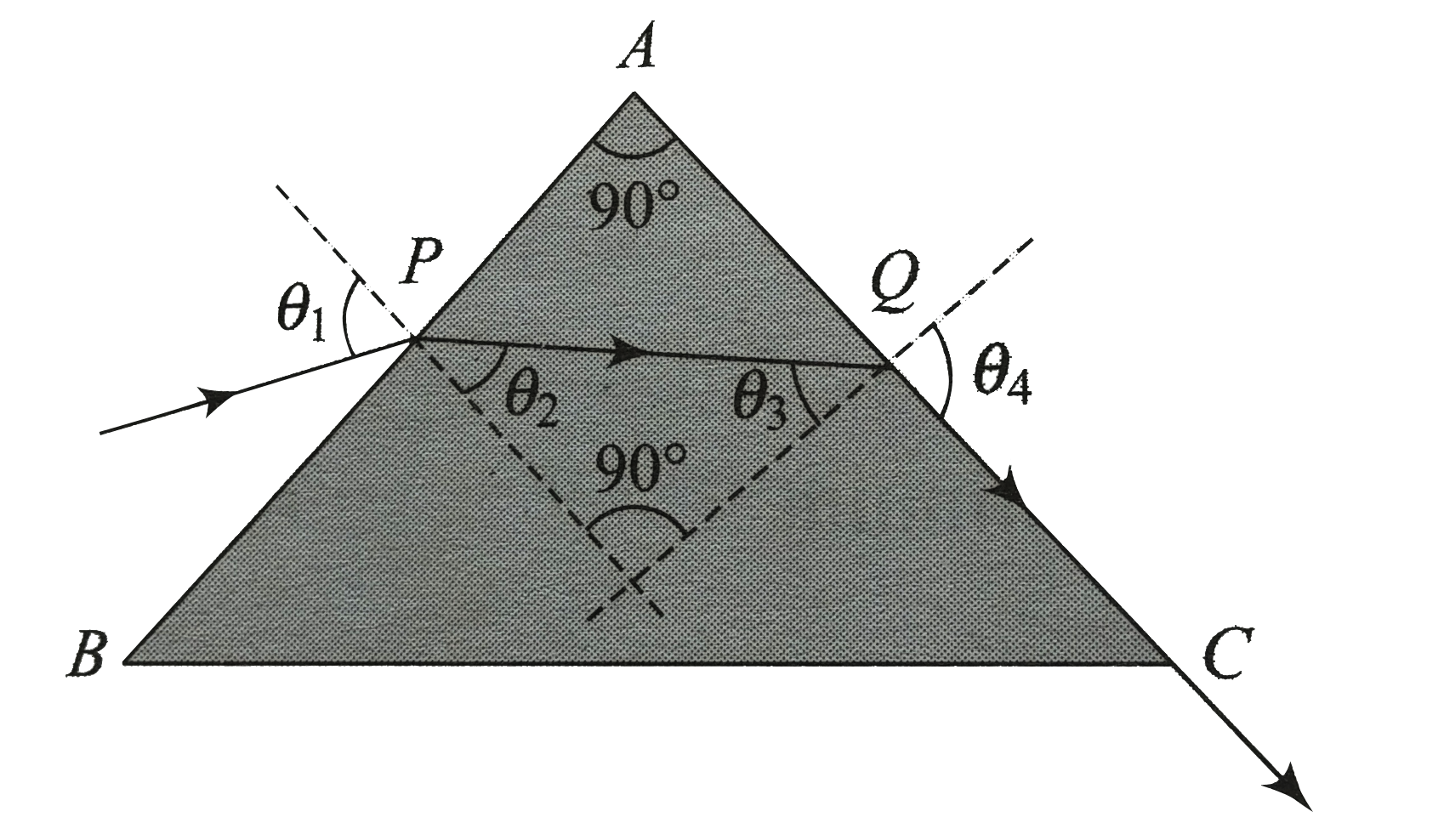Complete Solutions to Practive Exercise 5.5 of chapter GEOMETRICAL OPTICS of Class 12 book with complete answers and questions
| Class 12 | PHYSICS |
| Chapter | GEOMETRICAL OPTICS |
| PHYSICS GALAXY | Practive Exercise 5.5 |
| Number Of Questions | 12 |
| Academic Year | 2023-24 |
A glass prism of angle `72^(@)` and refractive index `1.66` is immersed in a liquid of `mu = 1.33`. Calculate the angle of minimum deviation.
View SolutionIn figure shown find the angle of incidence of the light ray on face AB of the prism for which light will reach face AC at incidence angle `60^(@)`.

`[90^(@)]`
View SolutionA ray of light is incident on a glass slab at grazing incidence. The refractive index of the material of the slab is given by `mu = sqrt((1+y))`. If the thickness of the slab is d, determine the equation of the trajectory of the ray inside the slab and the coordinates of the point where the ray exits from the slab. Take the origin to be at the point of entry of the ray.
`[y = (x^(2))/(4)]`
View SolutionA point source of light is placed directly below the surface of a lake at a distance h from the surface. Find the area surface of a lake at a distance h from the surface. Find the area on water from which the light will come out from water.
`[(pih^(2))/((mu^(2)-1))]`
View SolutionA ray of light incident normally on one of the faces of a right-angle isosceles prism is found to be totally reflected as shown in the figure. What is the minimum value of the refractive index of the material of the prism? When the prism is immersed in water, trace the path of the emergent ray for the same incident ray, indicating the values of all the angles `(mu_omega=4//3)`.

View SolutionFigure.. Shows a triangular prism of refracting angle `90^(@)` . A ray of light incident at face AB at an angle `theta _(1)`, refracts at point Q with an angle of refraction `90^(@)`.
a. What is the regractive index of the prism in terms of `theta_(1)`?
b. What is the maximum value that the refractive inde can have?
c. What happens to the light at Q if the incident angle at Q is (i) increased slightly, and (ii) decrease slightly?

View SolutionOn one face of an equilateral prism a light rays strikes normally. If its `mu = (3)/(2)`, find the angle between incident ray and the ray that leaves the prism.
`[60^(@)]`
View SolutionA light ray composed of two monochromatic components passes through a trihedral prism with refracting angle `theta = 60^(@)`. Find the angle `Delta alpha` between the components of the ray after its passage through the prism if their respective indies of refraction are equal to `1.515` and `1.520`. the prism is oriented to provide the least deflection angle.
View SolutionA parallel beam of light falls normally on the first face of a prism of small angle .At the second face it is partly reflected,the reflected beam striking at the first face again, and emerging from it in a direction making an angle `6^(@)` 30' with the reversed direction of the incident beam. The refracted beam is found to have undergone a deviation of `1^@ 15'` from the original direction.Find the refractive index of the glass and the angle of the prism.
View SolutionA ray of light is incident at an angle of `60^@` on the face of a prism having refracting angle `30^@.` The ray emerging out of the prism makes an angle `30^@` with the incident ray. Show that the emergent ray is perpendicular to the face through which it emerges and calculate the refractive index of the material of prism.
View SolutionThe refracting angle of a glass prism is `30^@.` A ray is incident onto one of the faces perpendicular to it. Find the angle `delta` between the incident ray and the ray that leaves the prism. The refractive index of glass is `mu=1.5.`
View SolutionA ray of light travelling in air is incident at grazing angle (incident angle=`90^(@))` on a long rectangular slab of a transparent medium of thickness `t=1.0` (see figure). The point of incidence is the origin `A(O,O)` .The medium has a variable index of refraction n(y) given by :`n(y)=[ky^(3//2)+1]^(1//2)` ,where k=`1.0m^(-3//2)`.the refractive index of air is 1.0`

(i) Obtain a relation between the slope of the trajectory of the ray at a point `B(x,y)`in the medium and the incident angle at that point
(ii) obtain an equation for the trajectory `y(x)`of the ray in the medium.
(ii) Determine the coordinates (`x_(1),y_(1))` of the point `P`.where the ray the ray intersects upper surface of the slab -air boundary.
Indicate the path of the ray subsequently.
View Solution
Practive Exercise 5.5 questions and complete solutions for chapter GEOMETRICAL OPTICS of GK PUBLICATIONS PHYSICS (HINGLISH) of Class 12
All Exercises from PHYSICS GALAXY Class 12 PHYSICS GEOMETRICAL OPTICS
- Advance MCQs with One or More Options Correct
- Conceptual MCQs Single Option Correct
- Discussion Question
- Illustrative Example
- Numerical MCQs Single Options Correct
- Practive Exercise 5.1
- Practive Exercise 5.2
- Practive Exercise 5.3
- Practive Exercise 5.4
- Practive Exercise 5.5
- Practive Exercise 5.6
- Practive Exercise 5.7
- Practive Exercise 5.8
- Practive Exercise 5.9
- Unsolved Numerical Problems